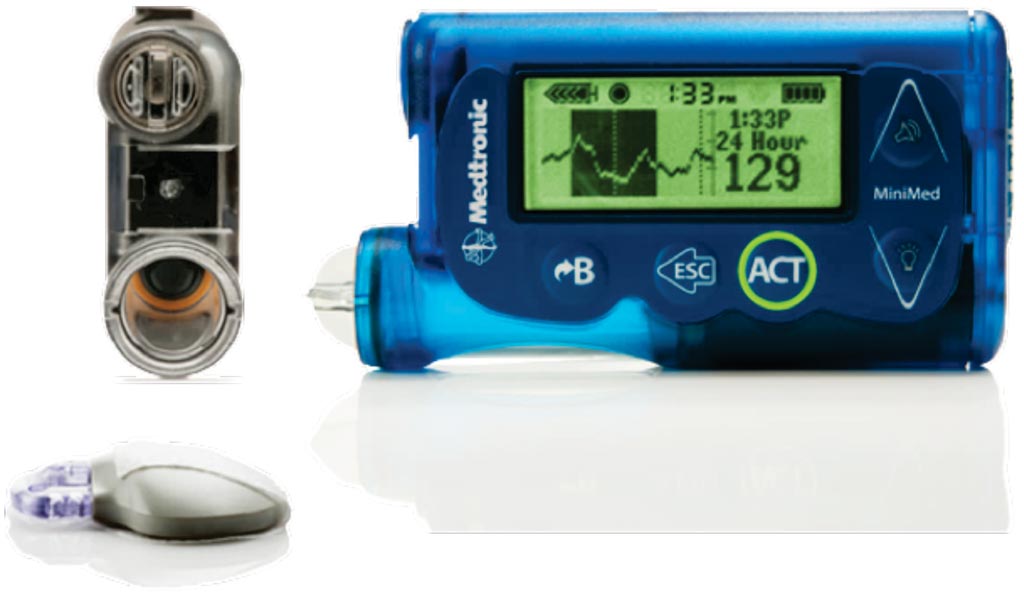Diabetic Retinopathy Linked to Glycemic Variability in Type 2-Diabetes
By LabMedica International staff writers
Posted on 13 Dec 2018
Latent autoimmune diabetes in adults (LADA) refers to adult diabetes patients who are initially non‐insulin requiring, but have type 1 diabetes mellitus‐associated autoantibodies and who often progress to insulin dependency.Posted on 13 Dec 2018
LADA manifests as a wide spectrum of heterogeneous clinical and metabolic phenotypes that are midway between those of classic type 1 diabetes mellitus and type 2 diabetes mellitus. It is estimated that LADA accounts for 4% to14% of patients with a diagnosis of type 2 diabetes mellitus.

Image: The continuous glucose monitoring (CGM) system (Photo courtesy of Medtronic).
Scientists affiliated with the Shanghai Jiao Tong University (Shanghai Shi, China) conducted a cross-sectional analysis of 192 adults (mean age, 56.4 years; 47.9% women; mean BMI, 23.2 kg/m2) with LADA and 2,927 adults with type 2 diabetes (mean age, 57.7 years, 57.3% women, mean BMI, 25.1 kg/m2). The participants were consecutively enrolled in the first group and randomly chosen for the second. All participants were recruited from July 2005 to December 2015. All participants were continuously monitored for 72 hours with a retrospective CGM system (Medtronic Inc, Northridge, CA, USA). Fundus photography was then used to confirm diabetic retinopathy (DR).
The investigators found that found that diabetic retinopathy was more common among those with type 2 diabetes than in those with LADA (26.4% versus 20.3%). Diabetic retinopathy was significantly linked to age, diabetes duration, systolic blood pressure, HbA1c and measurements of glycemic variability in participants with type 2 diabetes based on univariate logistic regression. In participants with LADA, diabetes duration, systolic BP and diastolic BP were the lone risk factors for diabetic retinopathy. They also noted that, overall, participants with LADA weighed less, had better BP and lipid profiles as well as higher glycemic variability and lower fasting C-peptide than those with type 2 diabetes.
The authors concluded that their study provided evidence that intraday glycemic variability (GV), as assessed by continuous glucose monitoring (CGM), was associated with the presence of DR in type 2 diabetes mellitus patients, but not in LADA patients, suggesting that GV should be minimized to decrease the risk of DR in type 2 diabetes mellitus, whereas achieving an optimal HbA1c without increasing the risk of hypoglycemia might be the primary goal in the treatment of LADA. The study was first published on October 10, 2018, in the Journal of Diabetes Investigation.













